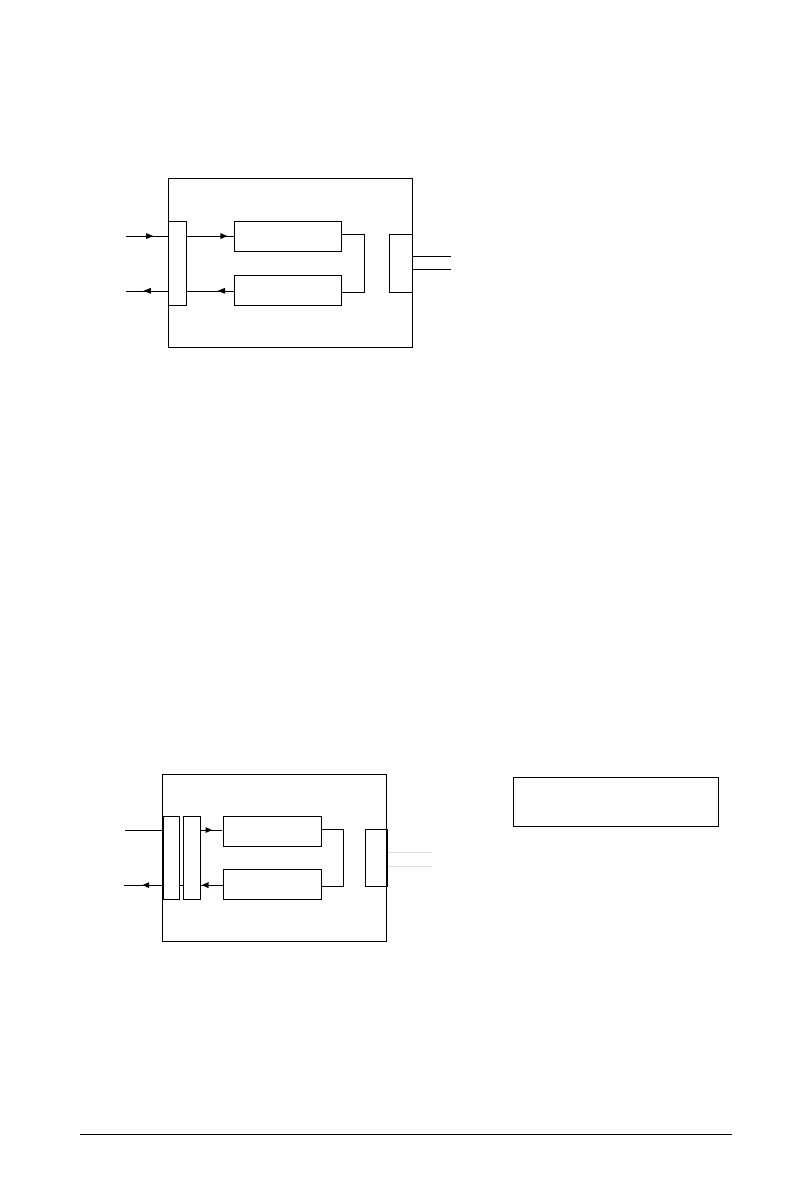
18–3
ing the test. This test can only be initiated while the modem is off-line. If the parallel
port DTE interface is used, this test will test the parallel port interface.
Analog Loopback with Self-test (AT&T8)
This test generates data from the modem itself instead of input data from the
RS-232 interface. The data will go through the same path as it would be with the
Analog Loopback Test. In the asynchronous mode, the pattern consists of printable
ASCII characters. You can see the result on the screen. In the synchronous mode, the
pattern is made up of scrambled binary 1 and the Throughput Meter will change to
a Bit Error Rate Meter. The left reader displays accumulated bit errors while the right
reader displays accumulated bits sent. The Elite 2864 model’s TST LED flashes for
any bit error and the Omni model’s EC LED flashes for any bit error. The Control
Level field of the LCD model’s LCD screen will be indicated as ALBST, which stands
for ALB with self-test.
This test can only be initiated when the modem is off-line. The following Bit Error
Rate Meter example shows 11120 Kbits sent, 22 bits in error. When the number ex-
ceeds 99999 Kbits, it will reset itself back to zero.
Local Digital Loopback Test (AT&T3)
This test will loopback the digital form data demodulated from the receiver to the
input of the transmitter. During testing, all data received from the remote modem
will be returned to the remote modem. This test is applicable when the remote mo-
dem does not provide V.54 Remote Digital Loopback capability. Also, the Control
Transmitter
Receiver
B
Modem
ALB
A: RS232 Interface
B: Line (Jack) Interface
A
DTE
Phone
Line
V32b 14400 ALBST DL
H >> 22 1120k S
C: Pattern Generator or Bit Error Tester
Transmitter
Receiver
B
ALBST
Modem
A
C
DTE
Phone
Line
V34 28800 ALBST DL
H>> 22 1120K S


















